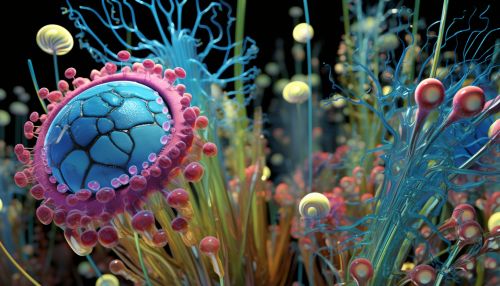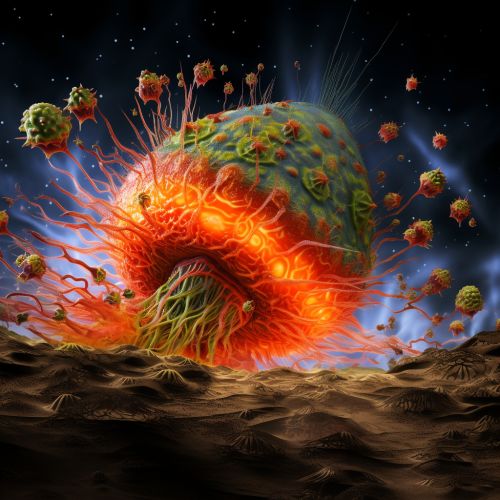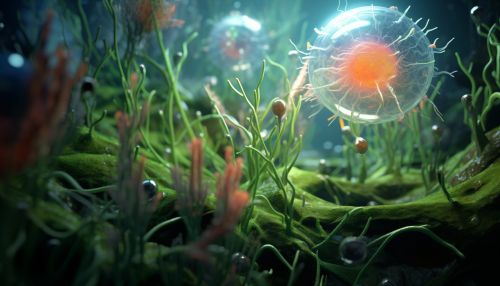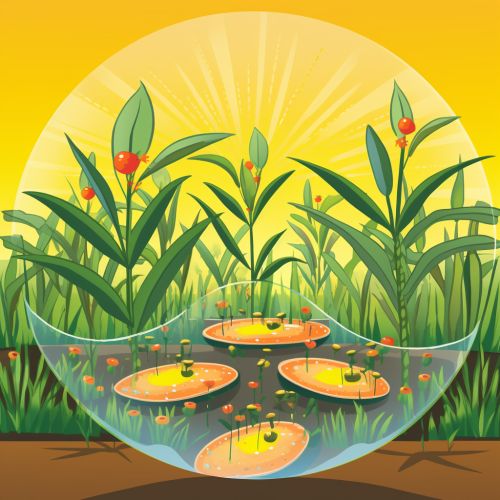The Biological Mechanisms of Plant Pathogen Interactions
Introduction
Plant pathogen interactions are a complex field of study in plant pathology, focusing on the biological mechanisms that govern the relationships between plants and their pathogens. These interactions can be categorized into two main types: biotrophic and necrotrophic. Biotrophic pathogens derive nutrients from living plant tissue, while necrotrophic pathogens kill plant tissue and then feed on the dead cells.
Biotrophic Interactions
Biotrophic interactions involve a delicate balance between the plant and the pathogen. The pathogen must avoid triggering the plant's immune system, while the plant must try to recognize and respond to the pathogen's presence.
Recognition of Pathogens
The first step in a biotrophic interaction is the recognition of the pathogen by the plant. This is often mediated by pattern recognition receptors (PRRs) on the surface of plant cells. These receptors can recognize general features of pathogens, known as pathogen-associated molecular patterns (PAMPs). When a PAMP is recognized, it triggers a defense response in the plant, known as PAMP-triggered immunity (PTI).


Suppression of Plant Defenses
However, successful biotrophic pathogens have evolved ways to suppress PTI. They do this by secreting effector proteins that interfere with the plant's immune response. Some effectors can inhibit the function of PRRs, while others can interfere with the signaling pathways that lead to PTI.
Effector-Triggered Immunity
In response to this, plants have evolved a second layer of defense known as effector-triggered immunity (ETI). This involves specific resistance (R) proteins in the plant that can recognize specific effector proteins from the pathogen. When an R protein recognizes an effector, it triggers a strong defense response that often results in the death of the infected cell, a process known as the hypersensitive response (HR).
Necrotrophic Interactions
Unlike biotrophs, necrotrophic pathogens kill plant cells before extracting nutrients. They do this using a variety of mechanisms, including the production of toxins, enzymes that degrade plant cell walls, and mechanical pressure.
Toxin Production
Many necrotrophs produce toxins that can kill plant cells. These toxins can be non-host-specific, affecting a wide range of plants, or host-specific, affecting only certain species or varieties of plants. Some toxins work by disrupting essential cellular processes, while others can trigger programmed cell death.


Enzyme Production
Necrotrophs also produce enzymes that degrade plant cell walls, allowing the pathogen to penetrate the plant tissue and access the nutrients within. These enzymes include cellulases, pectinases, and proteases.
Mechanical Pressure
Some necrotrophs can exert mechanical pressure on plant cells, causing them to rupture and die. This is often achieved through the growth of specialized structures known as hyphae, which can penetrate plant cells and spread throughout the plant tissue.
Interactions at the Molecular Level
At the molecular level, plant-pathogen interactions involve a complex interplay of signals and responses between the plant and the pathogen. These interactions can be influenced by a variety of factors, including the genetic makeup of the plant and the pathogen, environmental conditions, and the presence of other organisms.
Signal Perception and Transduction
The perception of signals from the pathogen and the transduction of these signals into a response is a key aspect of plant-pathogen interactions. This involves a variety of proteins, including receptors, kinases, and transcription factors.


Gene Expression
The response to a pathogen often involves changes in gene expression in the plant. This can include the upregulation of defense-related genes and the downregulation of genes involved in growth and development.
Hormonal Signaling
Hormonal signaling also plays a crucial role in plant-pathogen interactions. Hormones such as salicylic acid, jasmonic acid, and ethylene can regulate the plant's defense response, with different hormones often associated with different types of pathogens.
Conclusion
Understanding the biological mechanisms of plant-pathogen interactions is crucial for developing effective strategies for plant disease management. By studying these interactions at the molecular level, researchers can identify potential targets for disease control and develop new methods for enhancing plant resistance.
